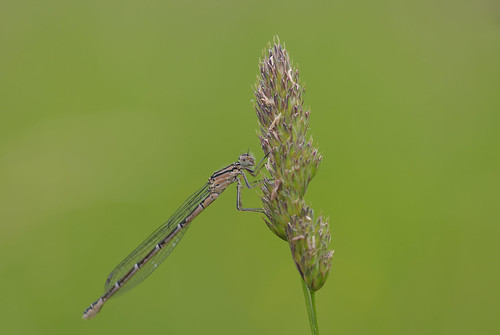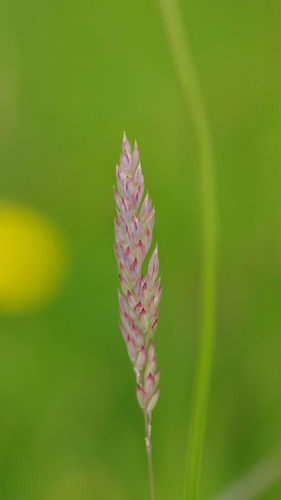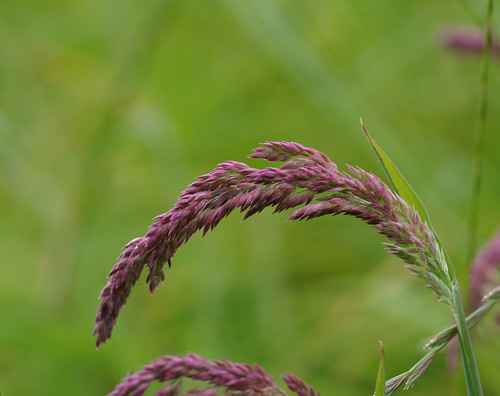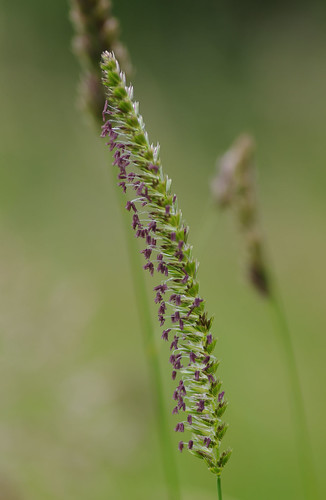The Grasses of Galmpton Common
It is every naturalist's dream to find an endangered species in a threatened site, thereby tipping the balance to save the site from development. Granted, there might be something vaguely egotistical about being the one to make the discovery. With our level of knowledge, trying to haul ourselves up a perpetually steep learning curve, it is extremely unlikely. But in this strange life and wondrous land, miracles can (and sometimes do) happen.
In the meantime there has been talk of the council putting a road through Galmpton Common and the inevitable war of words between the opposing sides. People defending local areas are often accused of being against progress and idly dismissed as 'NIMBYs'. But when a nearby area is in danger it is sometimes hard not to take it personally or feel an impending sense of loss.
More houses=more roads=inevitable further development. It's a vicious circle - the approval for the one tending to lead to the sanctioning for the other. In these difficult times, the environment is being sacrificed on the altar of economic progress. The common consensus is that more people = more spending power which will regenerate the economy. But despite the fact that Britain is one of the most overcrowded countries on the planet, politicians (and those that fund them) consistently refuse to engage with this problem and its future implications. Population increase and population control have become taboo subjects.
Conservation organisations are rallying together and making what amounts to a desperate last stand. The idea to preserve corridors for wildlife is a laudable one, in theory. But it also seems like an admission that the wider areas could ultimately be lost. New government legislation has supposed safeguards to protect the countryside. How effective will these safeguards be? Only time will tell.
Which brings me back (somewhat untidily) to Galmpton Common. Sadly, we did not find any rare species. But we did find several wonderful common species that we have seen many times before but neglected to record. In fact we found so much that I've decided to split this blog entry in two. This is Part One and will focus on grasses, while Part Two will be about the flowers of Galmpton Common.

False Oat-Grass (Arrhenatherum elatius)
There were many tall examples of this species swaying in the breeze. They must emerge as a tall spike and then at a later stage open out further down the stem.

This is the same species at a later stage of development. The seeds possess a single pointed spike, while to my eyes the drooping, purplish flowers resemble bluebells. It took me a while to realise that grasses open out in the same way flowers do. I had not really taken the trouble to examine them closely many times before. Our leisurely wander around the common gave me a new perspective and a different way of seeing. How much being in amongst something can be different from looking down on it!

Cock's-Foot (Dactylis glomerata)
In flower, this species changes from all green to being purple-tinged. It also gains a looser shape. The really odd thing was that some grasses of the same species that were next to each other appeared in various stages of development.
We had not gone far before being in and among the grasses yielded something else.

The males of the Common Blue Damselfly (Enallagma cyathigerum) are, as you might expect, blue. The females (like the one above) exhibit duller colours by comparison but are just as fascinating to watch. Sherry battled against the wind and experimented with different degrees of close-up before nailing the focus on the eye. The damselfly clung to the grass in the breeze. This is another Cock's-Foot grass, with a tightly compact head not yet in flower.
Here is another:

Flesh-Flies mating
Unlike the majority of flies, the female of this species give birth to larvae instead of eggs. I am rather hopeless when it comes to Latin names and often find them misleading. But the Latin name for the Flesh-Fly, Sarcophaga carnaria, brought to mind two vivid images: the sarcophagus of horror stories and the word carnal, with obvious connotations of flesh and desire.

Sweet Vernal-grass (Anthoxanthum odoratum)
Some grasses (like the one above) looked dried and past their best. If I had known the name of this grass beforehand I would have sniffed to discover if its name was justified.

Creeping Soft Grass (Holcus mollis)
The best shot of this species is a bit on the soft side for my tastes. But besides the breeze there was also a wealth of detail behind. The lens gives a relatively shallow depth of field but it still proved difficult to isolate one grass from those surrounding it.

Yorkshire Fog (Holcus lanatus)
This is a young specimen which in turn will grow to be like the one below.

The seeds are the same shape but everything else appears different. The specimen above makes me think of reeds. And when I think of reeds I can only ever imagine them swaying, as in the opening scene of Andrei Tarkovsky's film Solaris. The resulting softness is more appealing here, I think because it has a creamy, dreamy quality.

Crested Dog's-tail (Cynosurus cristatus)
This grass had such a distinctive form I was even able to identify it without referring to the field guide at home. And we had still only searched a relatively small area!
At length we cast a wider net, crossing Langdon Lane to examine the main body of Galmpton Common. Many of the same grasses were here in abundance. And on the far side, there were a few examples of this species; their delicate seeds looking like patterned Christmas tree baubles.

Quaking Grass (Brizia media)
And here are the baubles/seeds, magnified and cropped.

Later in their development these seeds will lose their charm and dry up. Under normal circumstances, this might already have happened but the unprecedented levels of rainfall have left everything behind. Wheat in the fields is not as high as it should be for the time of year, or as golden brown.
Further along the border of a track we found our final grass: a species I see practically everywhere.

Sherry had what you might term a 'spot of bother' with Wall Barley (Hordeum murinum). Either the top was blurred or the bottom of the grass was not quite clear enough. And in some shots, the crucial middle region was unclear. The shot above is probably the best of the bunch but we will give Wall Barley another crack on a less breezy day and hope for the best. Incidentally, this grass creates memories of being at school. In their green state, in the school grounds, these grasses were picked and used as darts. If the darts were on target they would stick to jumpers. Not something that would be advocated now (or was particularly encouraged then, come to think of it.) But in those days, before phones and consoles held sway, we often made our own amusement from whatever was close to hand.
At length, we continued around the common, shifting our focus from the grasses to the flowers.
Please look out for The Flowers of Galmpton Common to read about what we found next.

Comments
Add a Comment